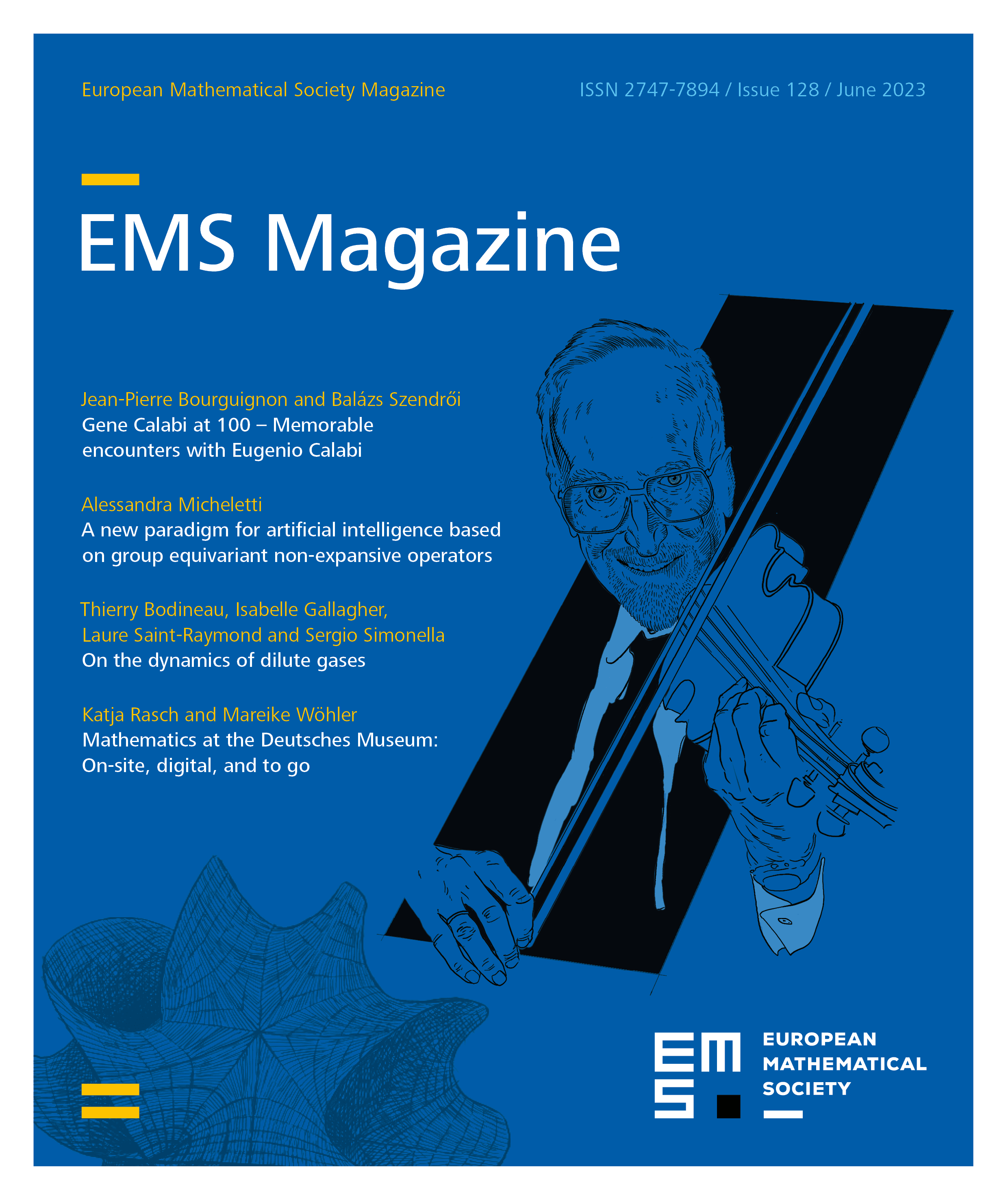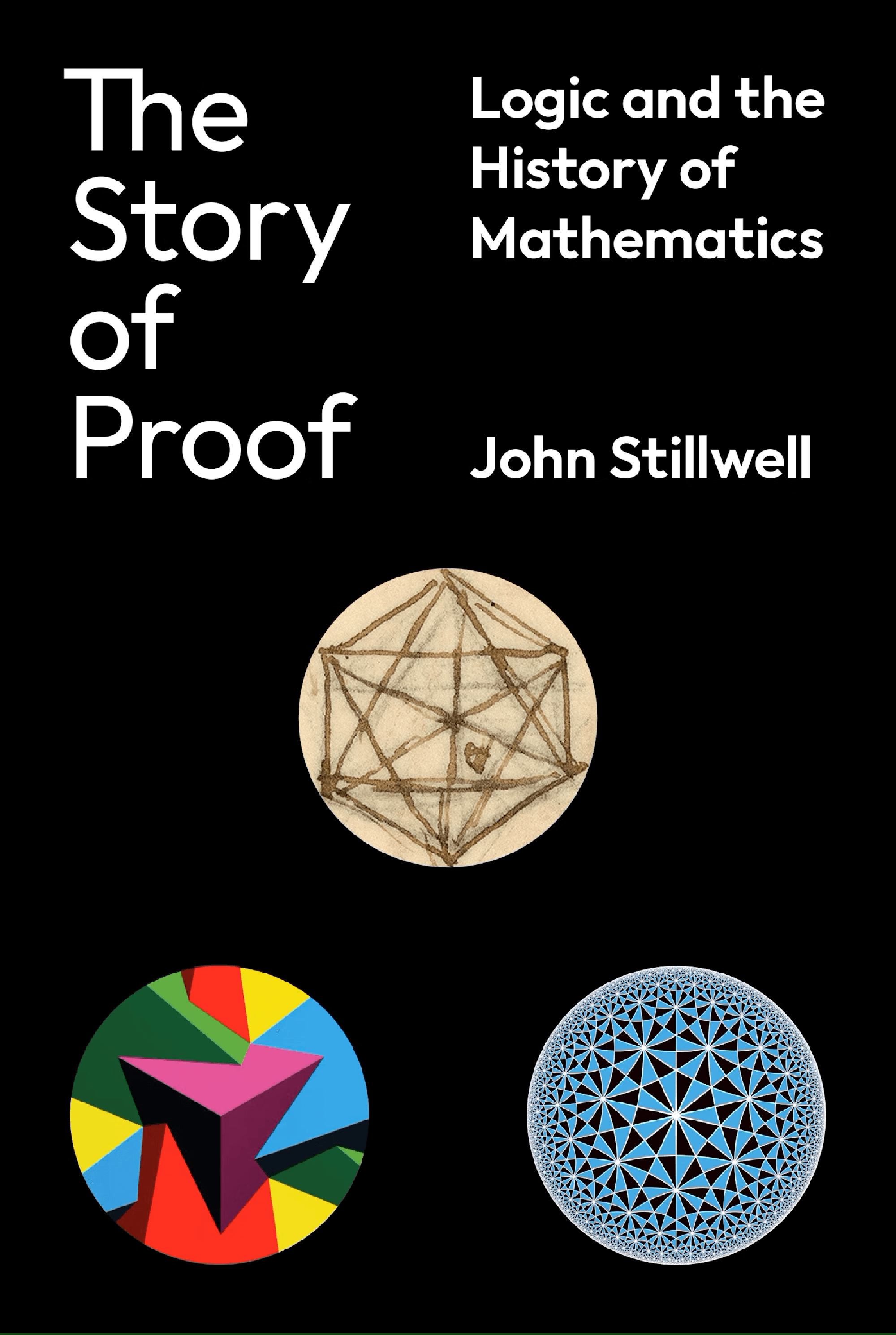All rights reserved.
Technically, we could reduce the essence of mathematics to the derivation of new theorems from previous knowledge in a coherent and logical way. There has been a tremendous shift in what and how things are proved. The Elements of Euclid had an elementary geometric axiomatic system allowing to give visually attractive proofs. Twenty-three centuries later Turing machines and the incompleteness theorems of Gödel had abstract proofs about what could be obtained within a logic system. With this evolution in mind, Stillwell sketches the history of mathematics and how the foundations of proofs, i.e., the axiomatic systems, were sharpened. There is definitely mutual influence of the formalisms and techniques used in the proofs and the emergence of new disciplines like algebra, calculus, topology, graphs, and others. Therefore, describing the history of what is proved and how it is proved, is just a history of mathematics itself, with proof as the binding tissue and that is what Stillwell does in this book.
The 16 chapters are essentially chronologically organized, but this is not a classic history book, with data and bios of mathematicians, and it is not the usual popularizing mathematics book either. For obvious reasons many proofs are included when not too complicated. The title is well chosen, it is an entertaining story being told.
The Pythagoras theorem was long known before Pythagoras. In the Western world as a geometric construction, while for Chinese and Indians, it was more computational and arithmetical (a set of Pythagorean triples). Euclid’s Elements was the first attempt to formalize the knowledge of his time with an axiomatic system and formal geometric proofs. This remained a standard for many centuries, until a complete geometric axiomatic system was set up in Hilbert’s time. Along with the invention of perspective, projective geometry was the first to raise doubts about the parallel axiom.
When the Muslims introduced algebra, new techniques became available, and algebraic equations described polynomials and geometric curves. In search of the roots of polynomials, complex numbers became a natural extension of the number system, and with a modification of the computational rules of addition and multiplication came also the generalization to algebraic structures like fields, rings, and vector spaces. The latter with a strong geometric interpretation, which naturally leads to the algebraic geometry of Fermat and Descartes.
The computation of tangents, length of a curve, area of a surface, or volumes, involved infinite sums and limits, which made the introduction of calculus necessary. With the controversy whether or not computing with infinitesimals is allowed, people started to rethink the notion of real numbers and other aspects of number theory like finite number fields, and the use of complex functions in number theory. Calculus also allowed to define continuity, enabling the mean value theorem and the fundamental theorem of algebra.
But geometry was not forgotten. Spherical geometry was not new, but removing the parallel axiom allowed, for example, hyperbolic geometry, and calculus also allowed differential and Riemannian geometry. Riemann also proposed to see algebraic curves as (Riemann) surfaces. Surfaces with cuts and holes can be modelled with graphs and the invariants are studied in topology. Tilings and graphs initiate excursions in group and knot theory.
As all these tools became available, attention converged on set theory, introducing notions of countability and ordinal numbers, which eventually resulted in sound axiomatic systems for numbers, geometry and set theory, including a foundation of induction proofs which had been used before on an intuitive basis. Also, just picking an infinite set of elements requires in certain situations the axiom of choice or equivalent assumptions like well ordering, or Zorn’s lemma, with an important impact on numbers, analysis, graphs, measures, algebra, and sets.
With this level of abstraction and excavation of the very foundations of mathematics, wondering what is indisputably true and what not, the formalization of the logic used in the proofs became a natural step to take. Starting with Boolean algebra, the computations with propositions and predicates became mechanical so that a machine could do it. But are these formal systems complete? Will it be possible to prove every true theorem in this system? And if a machine can do it, will the machine find out whether the theorem is true or false after a finite number of operations? Disappointing negative answers came in the 20th century from Gödel and Turing.
This illustrates that there is a strong interaction between the way mathematics evolved, and the way things are proved. Stillwell does include many proofs. In the earlier chapters, they are very simple, but towards the end, where abstraction has taken over, they require some mathematical maturity. Another tool that is used a number of times are mathematical models, not only when it comes to abstract formalities at the end, but also in the beginning in connection with non-Euclidean geometry, complex numbers, etc.
The first half of the book is certainly readable with some basic mathematical knowledge, but towards the end, it requires a reader that is really interested in the foundations to appreciate the discussion. Proof is essential in mathematics because it is not only important to know what is true and what not, but also why it is true. What and why mathematical statements are true has evolved considerably over the centuries. That we arrived at the current state of mathematics is not a coincidence. There is some logical, natural evolution, and that being clearly explained is what even professional mathematicians will appreciate in this entertaining story book.
John Stillwell Logic and the History of Mathematics. Princeton University Press, 2022, 458 pages, Hardback ISBN 978-0-691-23436-5, ebook ISBN 978-0-691-23437-3
Cite this article
Adhemar Bultheel, Book review: “The Story of Proof” by John Stillwell. Eur. Math. Soc. Mag. 128 (2023), pp. 73–74
DOI 10.4171/MAG/137
